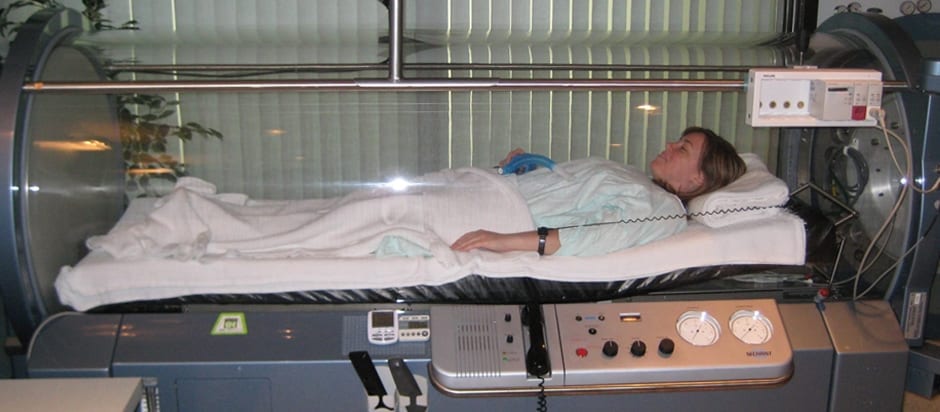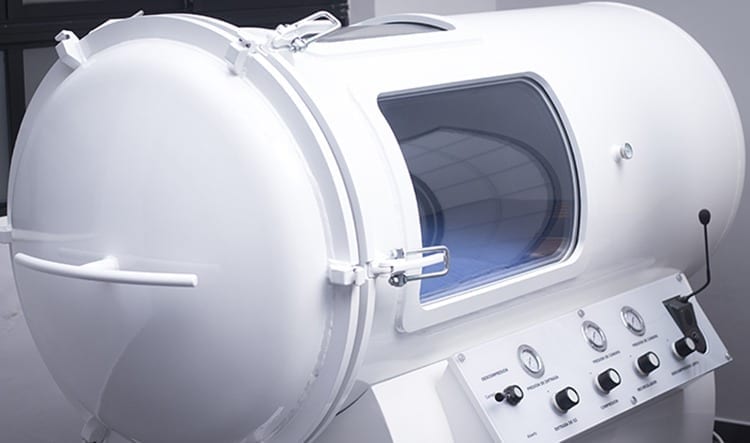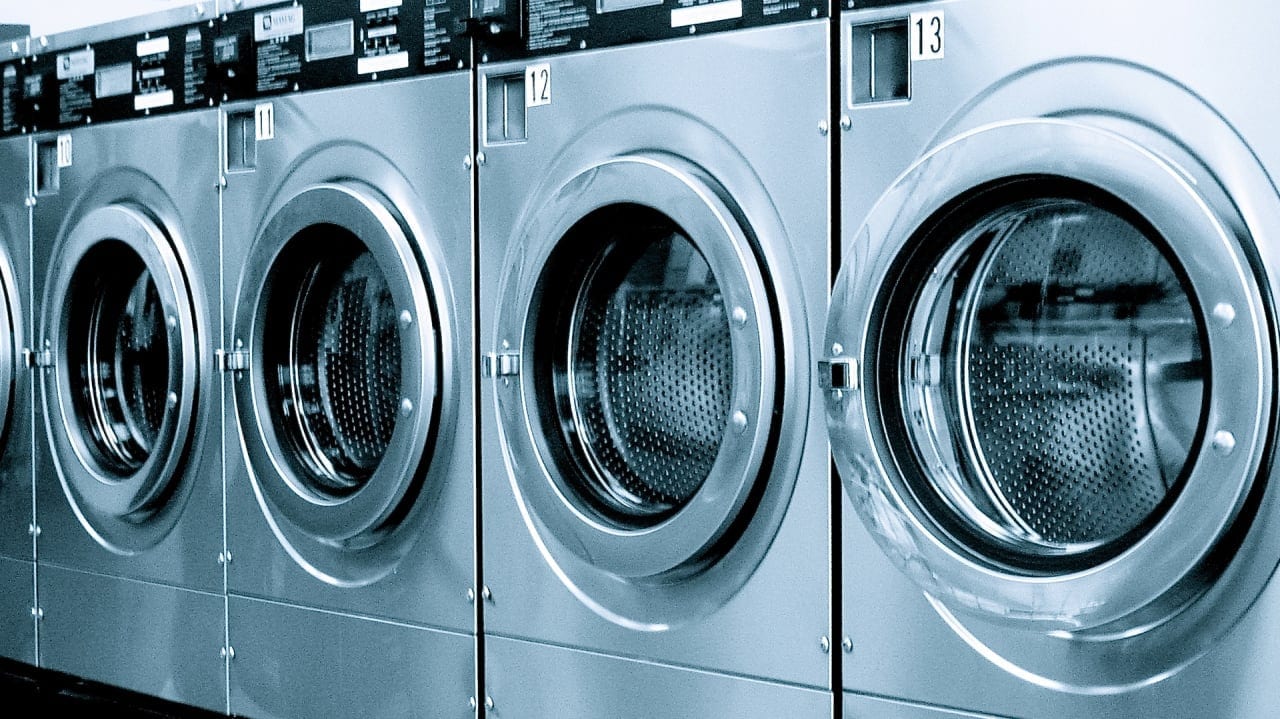
Certified scuba divers are familiar with the use of hyperbaric oxygen therapy (HBOT) for decompression sickness treatment.
However, in the past 50 years, researchers have revealed HBOT’s broad applications to human physiology and medicine. The outlook for HBOT applications for treating wounds, neurological diseases, and even certain cancers appears promising. What once seemed relevant only for scuba divers has now been discovered to benefit members of the general population.
Background
HBOT involves the administration of pure, 100% oxygen in a compression chamber at pressures above atmospheric levels. The resultant increase of oxygen content in blood yields a broad variety of physiological effects, because increased pressure allows oxygen to saturate more effectively in the body. For scuba divers, this increased oxygen pressure reduces the volume of inert-gas bubbles in blood vessels, reversing air embolism or decompression sickness (Danesh-Sani et al. 2012). Moreover, researchers have described several beneficial influences of HBOT on healing damaged tissues: increased white blood cell activity, reduced swelling, healing time reduction, tissue regeneration, and even synergistic activity with antibiotics (Stru?yna et al. 2008). The Undersea Hyperbaric Medicine Society recommends many applications for HBOT that have proven successful (Table 1). Beyond these now standard uses, several novel research areas demonstrate further beneficial HBOT applications. HBOT applications to wounds, cancers, and neurological and vascular diseases will be discussed below.
Wounds
Low oxygen content caused by swelling or burns reduces PH and prohibits wound healing. On the other hand, higher oxygen tension improves healing of wounds by stimulating tissue-forming cells (Danesh-Sani et al. 2012). Hyperbaric oxygenation of wounds thus initiates wound-healing events such as tissue and cell generation and resistance to infection (Shah 2010). Furthermore, oxygen helps fight against infections by killing bacteria that cannot tolerate oxygen (Youn 2001). For example, in treating injuries as common as burns, HBOT reduces healing time and number of infections (Stru?yna et al. 2008).
Cholesterol Crystal Embolism (CCE)
Such benefits also apply to patients of cholesterol crystal embolism (CCE), a disease with a high mortality rate. In a case study of a 56-year-old man who developed CCE and who had already undergone an unsuccessful standard treatment, HBOT caused rapid improvement. As seen in Fig. 1, after two months, complete recovery was obtained, leading the authors to conclude that HBOT may serve as an effective treatment in CCE (Gurgo et al., 2011).
Bone Healing
Another known application for HBOT is with bone healing, during which HBOT increases white blood cell activity and tissue formation (Danesh-Sani et al. 2012). Also, HBOT may induce the formation of new blood vessels by stimulating an increase of stem cells within the tissues (Shah 2010). An application of bone-healing effects regards the influence of HBOT on bone tissue after the cessation of smoking. Smoking has proven to delay bone healing and impair blood circulation; however, HBOT mitigates the effects of smoking on bone healing, now proving that bone damage caused by smoking may be reversible (Yen et al. 2008).
The Latest Bing News on:
Hyperbaric Oxygen
- Kintsugi Space: the healing new wellness destination using quantum physics in Abu Dhabion April 27, 2024 at 11:01 pm
A new all-women’s club in the UAE taps into good vibrations to reveal a new you. Angelina Villa-Clarke checks in to try a holistic programme of treatments from around the world ...
- I tried 60 minutes of hyperbaric oxygen therapy for the first time — here’s what happened to my bodyon April 26, 2024 at 5:00 pm
They might look like futuristic time machines, but hyperbaric oxygen chambers are right here, right now. If you haven’t seen or used one before, this oxygen-rich therapy increases oxygen uptake and ...
- Troy Regional Wound Care and Hyperbaric Medicine Center receives dual recognition in Patient Satisfaction Awardson April 26, 2024 at 9:23 am
On April 22, the Troy Regional Wound Care and Hyperbaric Medicine Center was named a dual recipient of RetorixHealth’s Clinical Distinction and Excellence in Patient Satisfaction Awards. Recipients of ...
- Biohacking and the race to become superhumanon April 25, 2024 at 11:01 pm
Biohacking is picking up in India, with followers trying everything from cryotherapy to IV therapy. As more centres open up, taking the trend to the masses, should we practice some caution?
- Grimsby man, 35, still defying cancer life expectancy and inspiring people around the worldon April 25, 2024 at 9:00 pm
A man has now twice beaten the life expectancy given to him by doctors as he continues to fight one of the rarest cancers. Dad-of-two Luke Goodwin, 35, from Grimsby took himself to hospital while ...
- 3X4 Genetics Selected as Preferred Partner for Leading Concierge Health Care Providers Next Health & Forum Healthon April 24, 2024 at 6:15 am
Founded by nutrigenetics pioneer Dr. Yael Joffe in 2018, 3X4 Genetics is leading the emerging fields of nutrigenetics and personalized health, offering accredited practitioners an ...
- N.B. man calls for hyperbaric oxygen care in province as hospital in N.S. is overwhelmedon April 22, 2024 at 3:23 pm
Jeff Leblanc urgently needs hyperbaric oxygen therapy to treat a potentially fatal side effect of radiation from his cancer treatments in 2013.
- Aviv Clinics shows new research on treating PTSD in veteranson April 22, 2024 at 10:04 am
Hyperbaric oxygen therapy is gaining traction as a treatment for people dealing with post traumatic stress disorder.
- A group of WWII-era scientists used themselves as guinea pigs to learn to breathe underwater. Their experiments helped make D-Day possible.on April 18, 2024 at 11:33 am
During WWII, scientists breathed CO2, oxygen, and other gases to learn about diving and submarine travel. They helped make D-Day happen.
- The Best New U.S. Resorts of 2023on April 16, 2024 at 7:00 am
More and more, travelers crave the feel of a far-flung resort without the international flight. The best new U.S. resorts prove a stint in New York’s Catskills, a little-known central California wine ...
The Latest Google Headlines on:
Hyperbaric Oxygen
[google_news title=”” keyword=”Hyperbaric Oxygen” num_posts=”10″ blurb_length=”0″ show_thumb=”left”]
The Latest Bing News on:
HBOT
- I tried 60 minutes of hyperbaric oxygen therapy for the first time — here’s what happened to my bodyon April 26, 2024 at 5:00 pm
If you haven’t seen or used one before, this oxygen-rich therapy increases oxygen uptake and boosts recovery. Hyperbaric oxygen therapy (HBOT) encourages the natural healing process by increasing ...
- London hospital sued for $16.5M over suicide attempt on psychiatric wardon April 23, 2024 at 5:33 am
Elliott, then 33, survived but suffered a profound brain injury. She can no longer speak or walk, has lost almost all voluntary movement, breathes through a tracheostomy tube inserted through a hole ...
- Family sues hospital for $16.5 million over daughter's suicide attempt on psychiatric wardon April 22, 2024 at 12:15 pm
Elliott, then 33, survived but suffered a profound brain injury. She can no longer speak or walk, has lost almost all voluntary movement, breathes through a tracheostomy tube inserted through a hole ...
- 417 Integrative Medicine Takes a Holistic Approach To Health Concerns in Springfield, Missouri, Using Evidence-Based Practiceson April 16, 2024 at 9:30 am
417 Integrative Medicine, located in Springfield, Missouri, provides a range of conventional therapies to empower patients to take control of their health.
- NDP call on gov't to fully reopen province's only hyperbaric oxygen therapy chamberon April 15, 2024 at 2:50 pm
The NDP is calling on the province to reopen the only hyperbolic chamber in the province to its full capacity.The province's only hyperbaric oxygen therapy (HBOT) chamber at Dr. F.H. Wigmore Regional ...
- Tim Hortons plastic-free lids: How eco-friendly are the alternatives?on April 15, 2024 at 2:31 pm
Tim Hortons is testing out plastic-free fibre lids made from plant-based materials in several stores in the Ottawa area, as well as one store in Gatineau, Que. as it says it's continuing its journey ...
- Advocates, Opposition continue calls to reopen hyperbaric chamber in Moose Jawon April 15, 2024 at 1:52 pm
Dutchak was joined by official Opposition Leader Carla Beck, rural and remote health critic Jared Clarke and International Association of Fire Fighters Local 553 president Taylor Enns at the hospital ...
- 5 Calf Stretches That’ll Loosen Your Tight, Cramped Muscles ASAPon February 9, 2024 at 8:57 am
If you have tight calves, you know lower-leg pain and movement restriction can make everything from doing a squat to descending a flight of stairs seemingly impossible. You may have tried stretching ...
- Family and friends of man with brain tumour are raising awarenesson June 3, 2023 at 4:59 pm
AN army of people have rallied together raising nearly £50,000 to support a young man following his diagnosis of a cancerous brain tumour.
The Latest Google Headlines on:
HBOT
[google_news title=”” keyword=”HBOT” num_posts=”10″ blurb_length=”0″ show_thumb=”left”]











